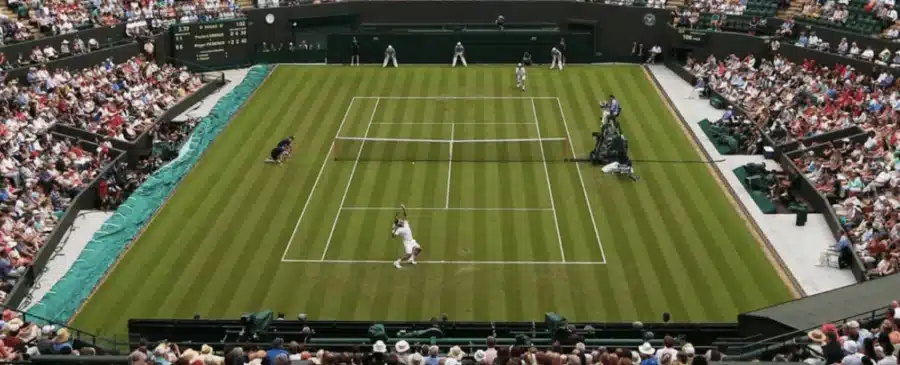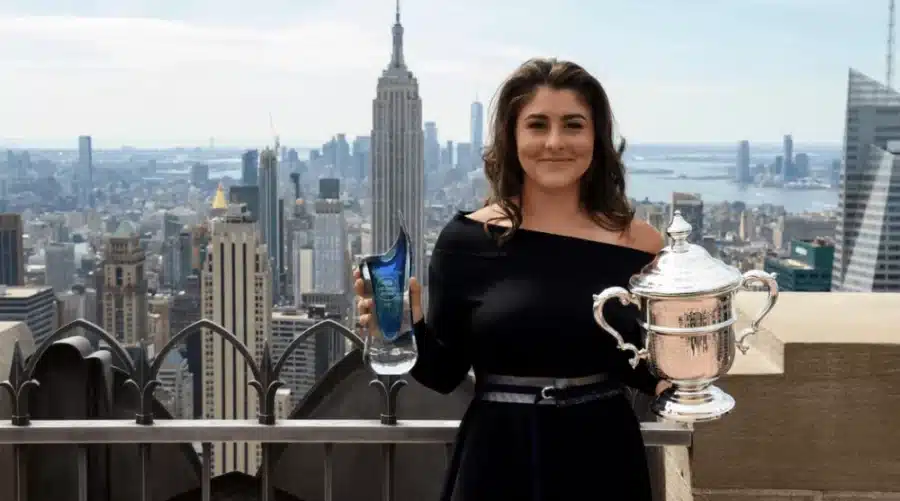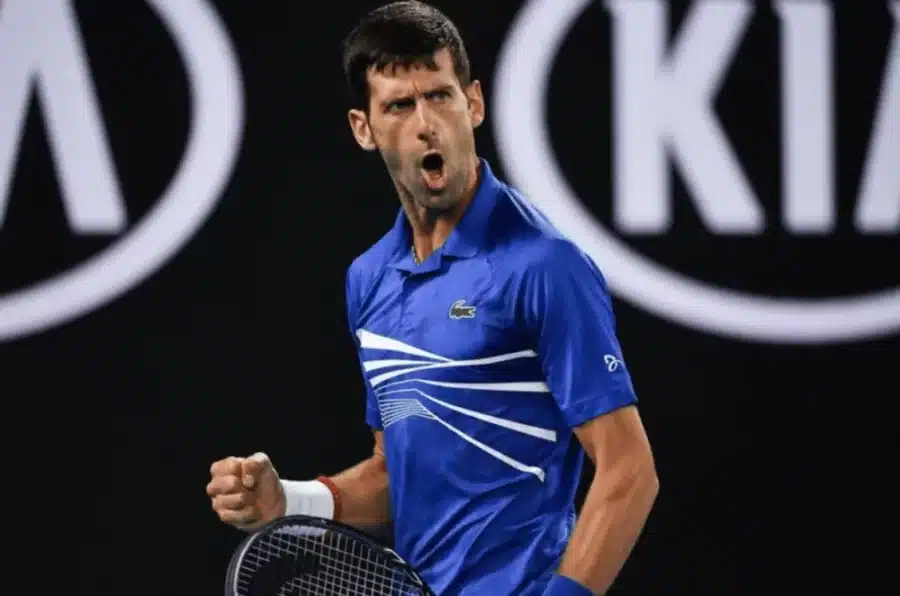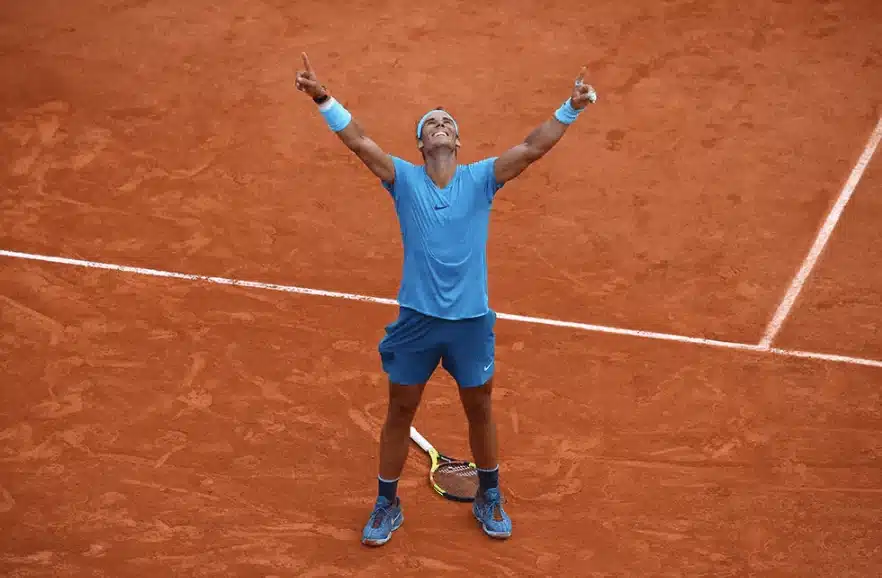2019 Tennis Season Recap
2019 Golf Season in Review
2019 was a legendary season and showcased a new era of up-and-coming contenders in the circuit to keep your eye on as we begin a new decade. We wanted to put together a quick highlight and review of the 2019 tennis season of some of our favorite tennis moments.
Wimbledon 2019
Novak Djokovic defeated Roger Federer in the first-ever tiebreaker to decide the Wimbledon Champion. Djokovic won all three tiebreakers in the match to win his 5th Wimbledon and 16th Grand Slam Championship 7-6, 1-6, 7-6, 4-6, 13-12. This was the first time that Wimbledon featured a tiebreak to determine the championship, making the 2019 Wimbledon Championships men’s finals one for the books and even better in person! The match was the longest singles final in Wimbledon history clocking in at four hours and 57 minutes!
We were lucky enough to witness Serena Williams get her third attempt to tie Margaret Court with 24 Grand Slam Women’s Championships but Simona Halep had other plans. Halep was looking for her first Wimbledon and second Grand Slam Title in her career.
Halep broke through with a title at the French Open in 2018 played incredibly to beat Serena 6-2, 6-2 and take home the Wimbledon Crown. Serena will continue to chase her 24th Slam Title and we look forward to watching in 2020.
2019 U.S. Open
Just one year ago, Bianca Andreescu was struggling in the qualifying draw, a 6-3, 7-5 loser at the hands of Serb Olga Danilovic, a defeat that left her, in her own words, at home “sitting on my butt.” Andreescu entered 2019 ranked outside the Top 150, with a versatile game but no real hopes of asserting herself at the majors, but her breakthrough wins in Indian Wells and in her hometown of Toronto provided some serious momentum heading into her maiden main-draw appearance at the US Open, where she became the first Canadian—man or woman—to capture a Grand Slam singles crown.
“I’ve never held that much money in my life,” laughed Andreescu, who collected $3.85 million after her straight-sets dismissal of 23-time Slam champ Serena Williams. “I’ve been dreaming of this moment for the longest time.”
Cocomania
Fresh off her inspirational run across the pond, where she became the youngest player ever to qualify for the main draw at Wimbledon and even ousted idol Venus Williams, 15-year-old Cori “Coco” Gauff played her way into the third round at the US Open, taking busloads of fans along for the ride.
Gauff stirred comparisons to Venus’ pro debut back in ’94 and harkened back to an era when freckled teens like Tracy Austin and Boris Becker regularly competed for big-stage titles. “The amount of people, kids especially, that come up to me saying I inspire them is honestly better than any match I could win, just to know that I inspire another kid maybe to pick up a racquet or go through something they’re facing at school,” she said.
The Hug Heard Around the World
If anyone understood the emotional demands of playing high-stakes matches in Arthur Ashe Stadium, it was defending champ Naomi Osaka, who a year earlier had captured her maiden Grand Slam title amidst the most difficult of circumstances. So when the world No.1 ended 15-year-old Coco Gauff’s magical run in Flushing Meadows, a tearful, 6-3, 6-0, loss in the third round, Osaka gave her opponent a heartfelt hug and invited the talented teen to remain on the court for the post-match festivities. It was a show of sportsmanship seen/heard ’round the world. “It was kind of instinctive,” said Osaka. “She just proved that she’s a true athlete,” said Gauff.
“For me, the definition of an athlete is someone who on the court treats you like your worst enemy, but off the court can be your best friend.”
Relentless Rafa
Rafael Nadal showed why, at 33, he’s among the very greatest competitors in the history of the sport. Facing an inspired challenge from streaking Daniil Medvedev in the final, the Mallorcan showed his trademark heart and gutted out an instant classic—a four-hour, 49-minute, 7-5, 6-3, 5-7, 4-6, 6-4 epic, winning his fourth US Open title and 19th overall. He now trails career-long rival Roger Federer by just one major. “It’s one of the most emotional nights in my tennis career,” said Nadal after holding off the Russian’s comeback from two sets down.
Forced to withdraw from his semifinal against Federer earlier this year, due to a knee injury, Nadal showed few signs of weakness on the hard courts of the USTA Billie Jean King National Tennis Center, and his game was as sharp as ever. Fans will long remember his around-the-net-post winners against both 2014 champ Marin Cilic in the Round of 16 and Medvedev in the title match.
Federer (And ‘Fedal’) Foild in Five
They landed on opposite sides of the draw, leading many to predict a Fedal finale. By the quarterfinals, that dream Roger Federer vs. Rafael Nadal blockbuster seemed all but a forgone conclusion. But fans, who had long awaited an encounter between these two champions at the US Open—the only major at which they’ve never met—suffered heartbreak when an ailing Federer was dismissed in five dramatic sets by a resurgent Grigor Dimitrov.
The Young and the Restless
Rafa Nadal said it himself: “It’s going to happen sooner than later that this era is going to end…The clock is not stopping. That’s part of the cycle of life.” Yes, players are staying competitive longer these days, but there’s a youth movement afoot, too.
Nineteen-year-old Bianca Andreescu took the women’s title, and Coco Gauff (15), Zachary Svajda (16), Caty McNally (17), Jenson Brooksby (18), Iga Swiatek (18), Dayana Yastremska (19) and Sofia Kenin (20) impressed, too. Said semifinalist Elina Svitolina, “These days, the young stars, they are going for it. They have no fear. They’re just throwing everything at us.”
2019 Australian Open
Stefanos Tsitsipas’ grueling 4-set victory over Roger Federer was eerily reminiscent of Federer’s own victory over Pete Sampras at Wimbledon in 2001, which set the stage for one of the greatest careers in ATP history. John McEnroe quipped, “you’re watching the changing of the guard” – a statement which was met with ambivalence from Federer, who (rightly) pointed out that he’s been hearing that narrative for the past ten years.
The result of this poor showing was yet another Nadal-Djokovic final. The pair came into the match having dropped just two sets between them during their inexorable march to the final, with Djokovic in pursuit of a record 7th Australian Open title to move him ahead of Roger Federer and Roy Emerson.
However, despite the imperious form of both contenders, the match quickly turned into a rout. Nadal looked uncomfortable from the outset and Djokovic could do no wrong, hitting just 9 unforced errors to 34 winners and taking the match in straight sets. The win means he will retain the top spot in the ATP rankings, while Nadal stays second.
It’s impossible to deny that Djokovic, Nadal, and Federer are likely nearing the twilight of their careers. However, given the inability of the younger generation to capitalize on this fact, McEnroe’s “changing of the guard” prediction is likely premature. We can’t wait to see what 2020 brings for all players and tournaments!
Osaka: Back-to-back Wins
21-year-old superstar Naomi Osaka completed a dream run to the top spot over the course of a year – ranked 72nd at this stage last year, she has since captured two major titles and becomes the first woman since Jennifer Capriati to win her first two Grand Slams back-to-back.
Osaka’s win lends the WTA tour its first sign of consistency since Serena Williams’ pregnancy. Entering this tournament, 11 different women could mathematically have taken the top spot, leaving no clear favorite for the title. However, Osaka produced a spirited run to the final, knocking off four seeded opponents in the process and twice coming back from a set down to win the match.
Serena was joined by Sloane Stephens and Madison Keys, as well as young guns Danielle Collins and Amanda Anisimova. Of these women, Collins was undoubtedly the star performer; the two-time NCAA tennis champion made a strong run to the semifinals before losing in straight sets to runner-up Kvitová, having never won a Grand Slam match before. Anisimova also showed glimpses of her promise, knocking out 11th seed Aryna Sabalenka in the third round.
2019 French Open
On the tennis circuit, late Spring means only one thing: clay. Following tournaments in Buenos Aires, Barcelona, Madrid, and Rome, the tennis community descends on Paris at the end of May for the French Open, held at Roland Garros. This year’s edition brought the success of familiar faces in the men’s draw, whilst the women’s side saw the top seeds knocked out early, paving the way for first-time finalists.
Even before Roland Garros opened the gates to its spectators, there was a suitable amount of buzz surrounding the men’s side of the competition, with, in particular, the news that Roger Federer had decided to return to the clay courts after a three-year absence, in the hope that he would be able to emulate his 2009 triumph, his only Roland Garros title.
If the prospect of having Federer return to the men’s draw didn’t waver the 11-time champion, Rafael Nadal, then his recent injury setbacks and mixed form in the build-up to the tournament was no doubt cause for concern. Recovering from a persistent knee injury that had cropped up yet again during the hard-court swing earlier on in the year, it would be safe to say that Nadal didn’t enter the clay season with full fitness, nor on top form.
He fell short at the semi-final stage at three competitions to Fabio Fognini, Stefanos Tsitsipas, and Dominic Thiem; all of them dangerous clay-court presences. However, in Rome Rafa finally began to find his feet on the red dirt and managed to beat perhaps his biggest threat going into Roland Garros, world number one Novak Djokovic.
Playing on clay is an enormous endurance test, as the ball slows down on impact with the surface and responds to spin variation, allowing for longer rallies and thus longer matches. As a result, there were some exciting 5-set matches early on in the men’s draw, such as Benoît Paire’s 11-9 win in the 5th against Pierre-Hugues Hébert in the second round. Or indeed Stan Wawrinka and Stefanos Tsitispas’s epic 4th round tussle, in which the 34-year old Wawrinka edged out the 20-year old young gun Tsitsipas in five.
By the time the semi-finals arrived, the 4 big names remained, with Dominic Thiem (a potential replacement for Andy Murray in the ‘Big Four’) squaring off against Novak Djokovic, and the 39th ‘Fedal’ matchup. The latter ended in a brisk 3 sets, with Nadal’s clay-court expertise overpowering Federer’s preferred quick-style of play. Thiem and Djokovic, however, went the distance, with a 4-hour match played over two days in testy conditions.
It was Thiem, however, who managed to topple the world number one in 5 sets with an impressive display that left Djokovic just about managing to hold on until the Austrian dealt the final blow, winning the 5th set 7-5.
The final was, therefore, a repeat of last year’s, and this time Thiem proved a stiffer test to Nadal (despite having played four days in a row due to poor weather conditions). As such, he managed to level the match to one set apiece and maintained an 83% first-serve percentage. However, Thiem’s resolve was soon shattered by Nadal’s overpowering play, as he took the first two games in the third set quickly, leaving Thiem no time to center himself and pose any sort of threat.
From there on out Nadal was in cruise control and took the final two sets 6-1 6-1, and in doing so breaking his own record of winning 12 French Open titles. One player remarked after Nadal won his 10th title that winning the French Open once is incredibly difficult, twice is remarkable, five times practically impossible, and ten times out of this world. The fact that this is his 12th gives some indication of the significance of his achievement.
Whilst the ending of the men’s draw was perhaps predictable to some, the women’s draw was much less so. At the start of the tournament, Naomi Osaka was bidding to win her third grand slam in a row and consolidate her position as world number one, Simona Halep was aiming to defend her title, whilst Serena Williams was hoping to cement her remarkable comeback to tennis following her pregnancy and time off of the court.
Of note was the presence of Johanna Konta amongst these four. Having had a rocky beginning to her year, Konta showed drastic signs of improvement coming into Roland Garros, having reached the final at Marrakech and Rome. These good performances put her in great stead for Wimbledon, where she’ll be hoping to go one better. It is also worth highlighting 17-year old Amanda Anisimova’s impressive run to the semis, which follows on from her strong performance at the Australian Open having reached the fourth round.
Given her young age, she is without a doubt one to watch in the coming years, if not at this year’s Wimbledon.
We are so excited about the 2020 tennis season! Which tournaments are you planning on catching in person? Let us know how we can help plan your trip of a lifetime and take care of the plans and details for you. Happy New Year!!
Go to your next tennis tournament!








